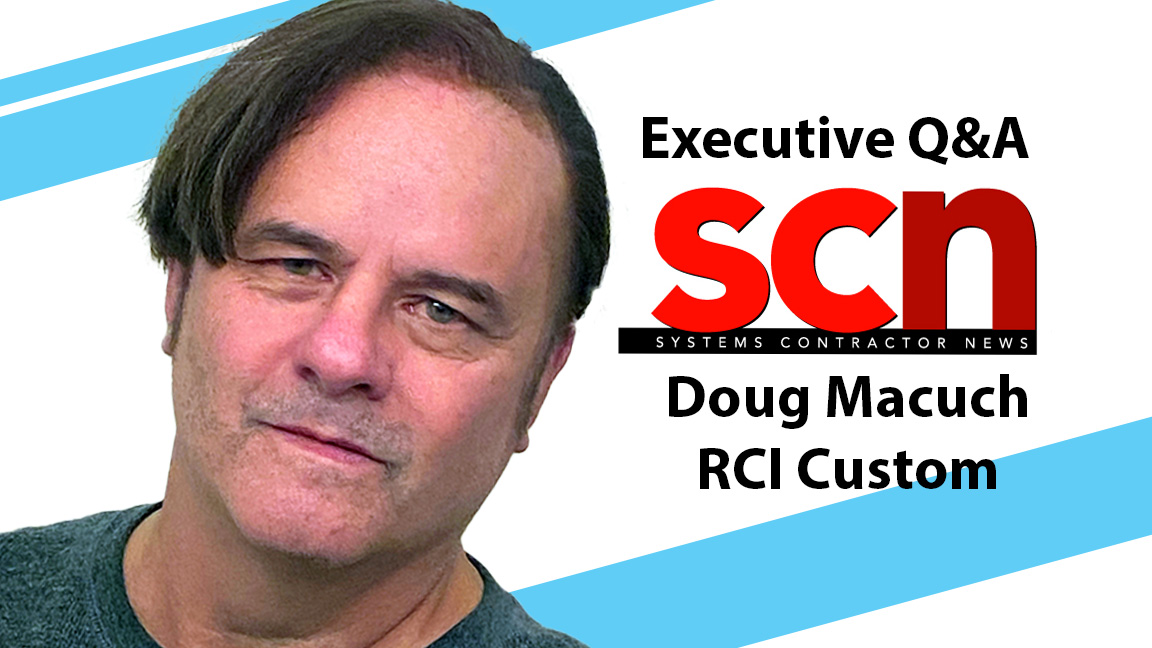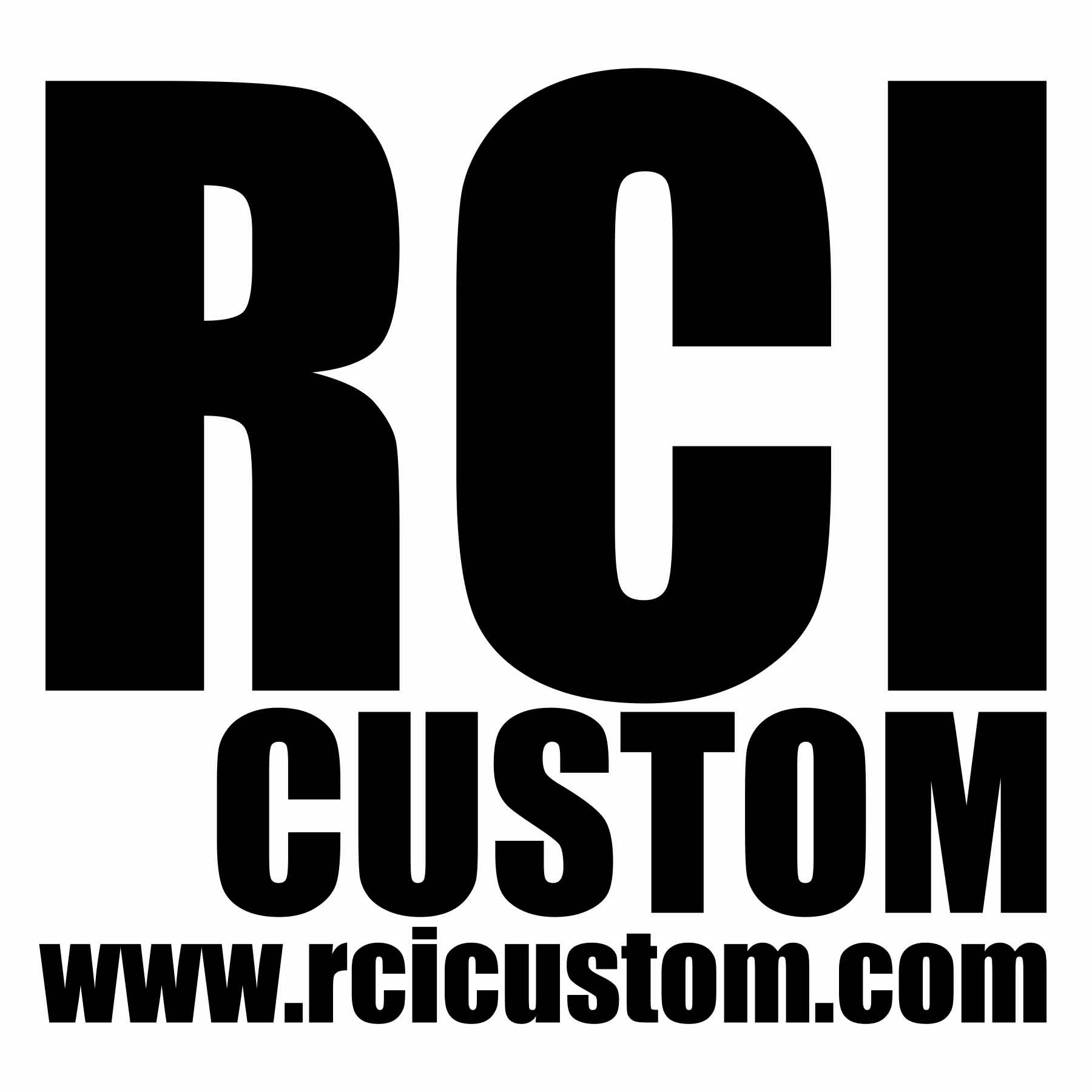Executive Q&A: What's It Worth?
RCI Custom CEO Doug Macuch explains the cost efficiencies of custom panels and more.

SCN: What made you decide to open RCI Custom back in 1991?
Doug Macuch: Well, I didn’t really “open” the company as much as I recognized a great opportunity. I was actually working for a company called RCI Systems. We did design, installation, live sound, and production. The owner of the company, Jay Kingery, and his chief engineer, George Saur, were working with Jeff Loether at Marriott on design and build activity for hotels around the globe. That process included designing and manufacturing the standard wall plates and rack panels used in ballrooms, some patch bays, press mults, and some signal processing equipment that was used in each installation.

Enough subcontract installers began asking if they could buy these items that I approached Jay with the idea of creating a separate manufacturing division to sell our own products. At that time, connectivity panels were basically left to the integrator's discretion. They would source the metal, cut the holes, grain the raw metal, paint or plate them, get engraving, and buy the connectors. As you can imagine, there was very little in the way of standards or consistency. We simply provided a service: the ability to design and manufacture connectivity solutions, and deliver the product ready for install. It worked out pretty well.
[Executive Q&A: Inclusion through Audio]
SCN: When people hear “custom,” they think expensive. How reasonable are custom solutions for Pro AV projects?
DM: Not surprisingly, I think custom is very reasonable. It really comes down to value. If we can save a business the time and expense of the panel process, what is that worth? We are a company dedicated to making custom panels, and we can provide all the efficiencies associated with that that most integrators don’t have.
I would suggest that with skilled human resources and time at such a premium these days, engineers, project managers, purchasing managers, and install techs have more important things to do than manage the panel process. Whether it is RCI or some other company, it has to be less costly and more efficient for the integrator to buy the finished product than to manage the manufacturing process.
A daily selection of the top stories for AV integrators, resellers and consultants. Sign up below.
SCN: What is one of your favorite recent custom jobs?
DM: There are so many interesting projects, it’s hard to single one out. It was awesome watching the Philadelphia Phillies in the playoffs and the Texas Rangers during their World Series run this year—knowing that the broadcasts of both teams were passing through panels we’d manufactured. Same thing with Super Bowl LIV at Hard Rock Stadium in Miami, or any of the many other sports venues that broadcast through RCI Custom Products. Studio builds for big name artists are always interesting, too.
Working with customers and consultants to solve problems that can’t be solved with an off-the-shelf solution is really rewarding.
If I have to pick a recent favorite, it would be designing and creating large, tamper-resistant tabletop turrets and security-level, pole-mounted card readers for a dealer working within the prison system down south. The project was very complex and involved, and was very collaborative in nature. Working with customers and consultants to solve problems that can’t be solved with an off-the-shelf solution is really rewarding.
SCN: You’ve got custom Pro AV solutions in several verticals, but what markets are keeping you busiest these days?
DM: The strongest markets for us have been education, sporting venues, and hospitality. Casinos and gaming in general seem to be strong as well, but there is opportunity everywhere. IT, marine, and aircraft applications are abundant. There are very few limitations with custom work.
SCN: We know you do custom work, but you’ve got some off-the-shelf components available, too. What are some of your more popular in-stock items?
DM: The past year, standard items that grew in popularity included LED logo panels and rack power strips, which we customize with company logo and corporate brand. It's an amazingly eye-catching way to advertise. NEMA box enclosures with doors have also become very popular, as consultants and integrators seek to combine as much necessary connectivity as is reasonable into one designated space. Smaller sizes have a single customizable panel inside to populate, while larger units come with rack rail and can be fitted in a modular fashion. Finally, trim kits are a “stock” item that still need to be custom configured for each application. Most video walls have exposed edges after install, so a trim kit is a great way to professionally dress up the edges, as well as hide wiring and lights that blink behind the monitors.
[Editorial: Celebrate Your Corporate Rituals]
SCN: How has your PanelBuilder SE design tool developed over the years, and how does it help your customers?
DM: Great question. That was an idea that came about in the late 90s. We needed a very basic and easy way to allow customers to get a quick drawing and budgetary number for commonly used panels without having to wait for an estimator who might have 10 RFQs in front of him already. PanelBuilder was the answer. It allowed users to easily drag and drop components on a panel and get a price in real time—along with a drawing or spec sheet for most basic panel types—in less time than it takes to even request a quote from an estimator.
It has evolved into a much more sophisticated app over the years. Input and suggestions from our customers and consultants have driven continual improvement of the app. We regularly add new functionality, panels, and sub-assemblies, and manage our ever-growing library of connectors and component parts as customer requirements develop. It has become much bigger than when it first launched in 2002. Users love that they can get a DWG drawing and budgetary number for use in their internal CAD drawings, while we manage the parts library. It’s been a great tool for everybody, even our competitors.
SCN: What are some important considerations for a customer who needs to design an AV equipment rack?
DM: Space, ventilation, and wire management. Do you want your blank panels to match your rack finish, or match your custom panels? Tie bars or lacing panels for wire management? And do you plan to add your corporate brand/service info to the rack via a logo panel or logo power supply?
[Executive Q&A: Innovation on Display]
SCN: We’ve all dealt with “spaghetti” behind equipment racks. How does RCI Custom clean up wiring issues, and what advice can you give to help others minimize the mess?
DM: Well, obviously planning and wire management are critical. Organization and execution of wiring racks is critical for smooth installations, operation, serviceability, and longevity of a project. Proper use of lacing panels and tie bars for lacing and harnessing of internal wiring down the sides of a racks with common separation between high and low impedance signals and power should always be of high importance. When practical, pre-wiring racks in the shop using screw terminal and other connectivity panels to aid in field termination is a big advantage. This allows for a more controlled work environment, as well as pre-testing of the system before installation. It also minimizes potential mistakes, skilled labor, time on site, and simplifies equipment upgrades and changes in the future.

Mark J. Pescatore, Ph.D., has been the content director of Systems Contractor News since 2021. During his career, he's hosted and programmed two ongoing regional industry trade shows (including Future B2B's AV/IT Summit), produced and hosted podcasts and webinars focused on the professional video marketplace, taught more than a dozen college communication courses, co-authored the book Working with HDV, and co-edited two editions of The Guide to Digital Television.
